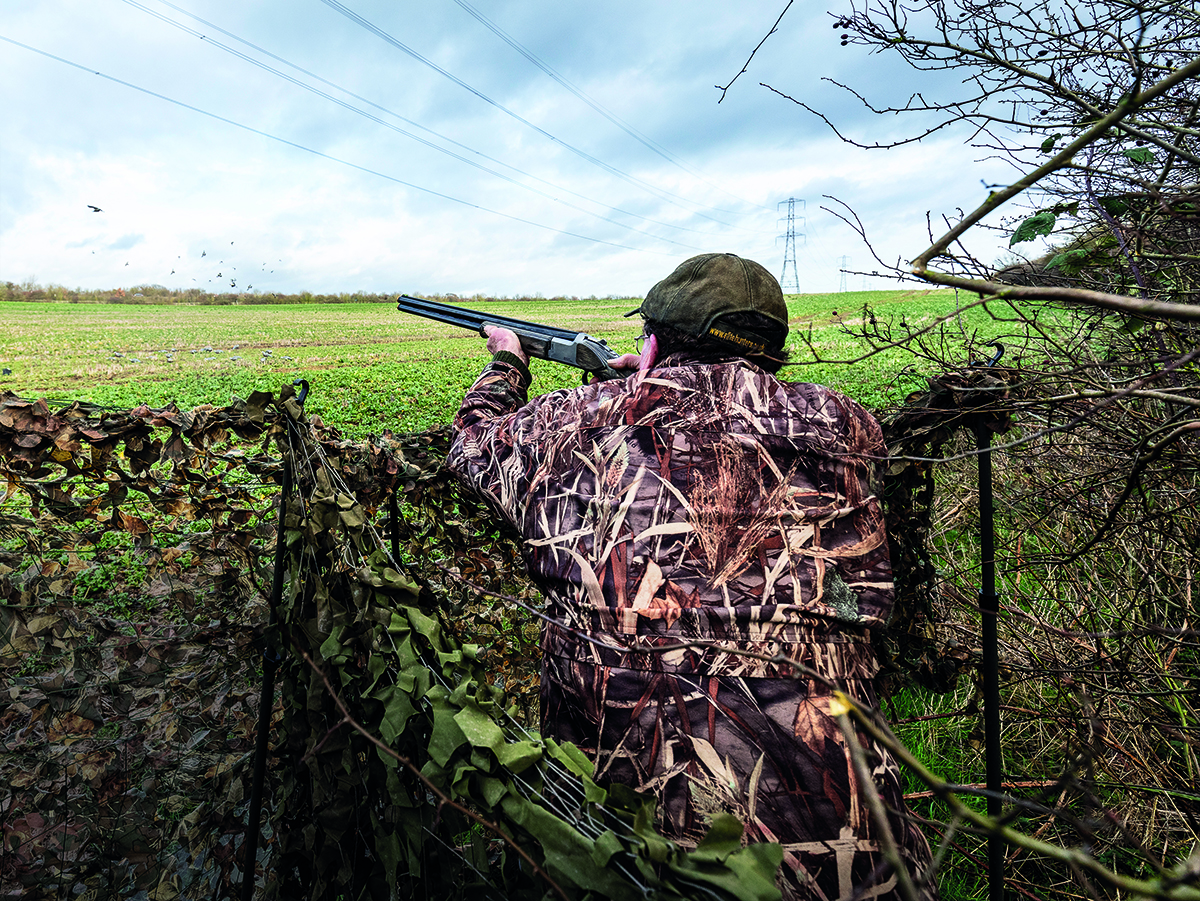Spring pigeon shooting – Peter Theobald on the best drills
Peter Theobald talks about the way to exploit the best opportunities at the time of spring plantings

There is no greater adrenaline rush than finding a field of rapeseed covered with pigeon
Come April, most of the fields due to be planted with spring crops should be drying out nicely and a lot of the lighter soils already sown. Indeed, I saw the first drills out on 28 January, admittedly after a prolonged dry spell. Because of a dry autumn in my part of the world (Essex), most, if not all of the winter drilling programme was completed in perfect conditions, meaning there is relatively little to be sown in the spring.
You might ask what all this has to do with shooting pigeons, but this is the time of year when decoyers must be alert to any changes in feeding opportunities. It is easy to become complacent when pigeons have been feeding relentlessly on rape for five months, and therefore miss the chance to make a big bag when birds find a field of fresh drillings. Lucky indeed is the decoyer who receives a heads up from the farmer who informs him he will be planting in a few days’ time.
Usually it is a retrospective, “You should have been here last week, we planted peas and the field was blue with pigeons.”
So it is up to us to know all the fields on our permissions that will be planted, not only when but with what, so we can plan our reconnaissance accordingly.
Predict
In an ideal world (for the pigeon shooter), spring-drilled fields would be few and far between, with bad weather interrupting the process and therefore concentrating the birds. The very opposite to the farmer’s wishes, who hopes to crack on and get the job done as quickly as possible. That is why a decoyer to be successful must be able to predict the weather in order to take advantage of a situation they might not have done in ideal conditions. Things change quickly at this time of year, with birds moving on as soon as the seed is cleared. Often this is within a day of sowing, particularly with the super-efficient drills that most farmers possess these days. Gone are the days when you could spot a field on Monday and leave it till the weekend before shooting it, confident the food supply would last until then.
It is probably the biggest cause of disappointment among decoyers that the field crawling with birds yesterday is completely devoid today when you turn up to shoot. It is possible to avoid such disappointment by checking the field you intend to shoot late in the afternoon of the previous day, after the pigeons have left to roost. If you can still find loose grains, no matter how few, you can be confident the birds will return the next day.
Chance
Another way is to observe pigeons on fresh drillings. If they appear to be racing across the ground, barely pausing to peck a seed, it is likely there is little food available. Timing your visit, therefore, is crucial to success. Should I shoot tomorrow, when I know there will still be a bit of food left, even though only 50 birds have found it, or should I take a chance and let them build up for a few days? I have kicked myself for allowing numbers to build, then underestimating how quickly pigeons pass on the information of an easy feed.

April is generally the most successful month for bagging pigeons
From 50 one day to 500 the next, obviously clearing the food in one fell swoop. These days, if you are confident of large local populations, it is worth taking a chance on this rapid build up, shooting the day after you see any activity at all. This would almost certainly fly in the face of advice from older professionals, who would always say: “Let the numbers build before having a go.” However, it may be the only opportunity you get.
While we decoyers look forward to the chance of making decent bags on drillings, especially after the frustration of chasing pigeons round the various rape fields, it must not be forgotten that April is the month we generally have most success on the aforementioned rape fields. There are a variety of reasons for this. As soon as the weather starts to warm up and farmers apply some nitrogen to the rape, the plants start to grow rapidly. When the farmer sees this, he often abandons his scaring regime, particularly when he can no longer see the birds feeding.
Pigeons are forced to concentrate on areas that have been grazed short through the winter, usually within easy range of sitty trees. This is perfect for the decoyer, especially when the large winter flocks start to break up into their breeding territories. Reconnaissance can be more difficult, with taller crops and leaves beginning to burst out in the hedgerows, but there is no greater adrenalin rush than discovering 500 pigeons cosily tucked out of the way on the only bit of short rape for miles around. I guarantee you will not sleep well that night.








